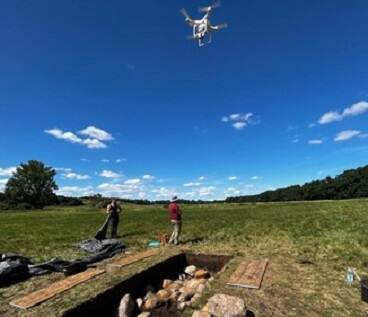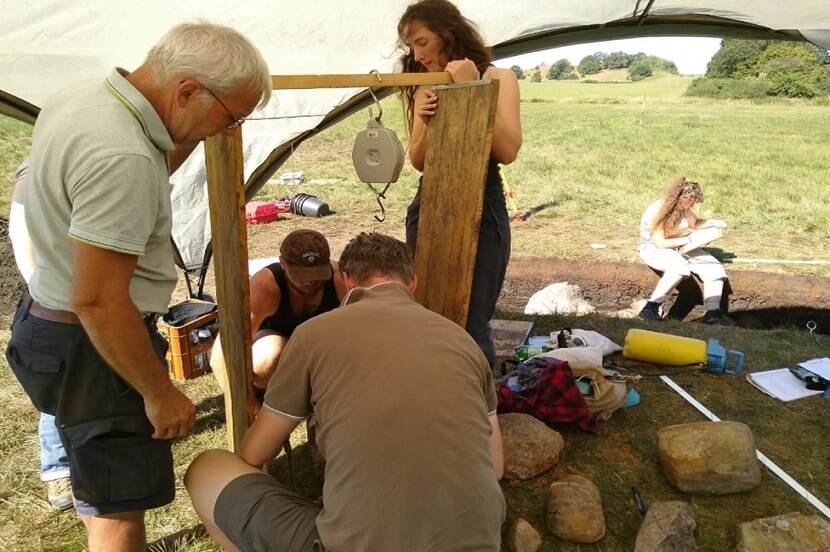Tollense field school - Part 8
Weblog
During the first two weeks of August 2022, students from Leiden University, University of Rostock and University of Göttingen have joined the Tollense Field school to research an archaeological site in the Tollense Valley in northern Germany. The Cultural Heritage Agency participates in this field school to support capacity-building of a younger generation maritime archaeologists and to facilitate international knowledge exchange. In these series of blogs, students and partners tell about their experiences. Read more about this international field school and the Tollense valley in the first weblog. This time, students of the Göttingen team tell about their finds.
In 2013, a trackway was discovered in the Tollense valley at site Kessin 12 by geomagnetic surveys and by test excavations. Surprisingly, some radiocarbon dates and a few dendrochronological dates assigned the discovery to the Bronze Age! The Göttingen team addressed one of the major questions of the Tollense Fieldschool 2022: How does climate change affect the preservation of this causeway? To solve this question, we needed more detailed information on the construction. At the same time, we wanted to know if the route had changed during the time of its use

The first trench was located where we expected a possible sideway. We carefully started our excavation layer by layer and on the first day we found peat below the plough soil. During the next days, more peat came to light and no indication for any construction. Only sand lenses indicated that human activity took place nearby in the Bronze Age. One of our site directors described the evidence brief and accurate: “we found peat, peat, and more peat. By the way, did I mention that we found peat?” Actually, we learned a lot about hard and dry peat or wet and smooth peat with many botanical macro remains. After four days we had learned our lesson and were well prepared for the second trench!
From scepticism to excitement
Trench 2 was located only a few meters to the east. We removed the plough soil and the next layer showed – what a surprise – hard loamy peat. Our feelings ranged from cautious to sceptical. However, soon after, the first boulders appeared and we got excited. Step by step we excavated a surface covered by boulders of various sizes with sand on top and below. How could such a structure survive below the plough layer, without the stones sunken into the bog? The following day, we removed the boulders so we could solve the secret. At the side of the trackway, some wooden stakes and a plank appeared. The stakes probably stabilized the border of the causeway and a timber plank stabilized the ground.
We carefully documented our findings and finally took samples for the identification of the wood species and for radiocarbon dating. Sebastian Lorenz from the University of Greifswald gave a field lecture on the geoprofiles and explained what the valley looked like in the Bronze Age.
Gaining new insights
Thanks to our professors and the support by experts such as Jens Auer and Martijn Manders, we were successful and learned that a small trench can tell you a lot. We can better address the preservation conditions and at the same time we got new insights in the construction of the trackway. Now the lab work has to be organized. Will the radiocarbon dates confirm that we have really documented a small piece of the Bronze Age causeway?
The field school was a highly interesting project for all of us. We stood together as a team, we have improved our knowledge and developed a new cooperation. Many thanks to the participants of this interdisciplinary project, like the teachers, external personnel, local volunteers and of course the teams of Rostock and Leiden universities. We hope to see you soon and continue next year in Tollense Valley.
